
- Bioactive Compounds
- By Signaling Pathways
- PI3K/Akt/mTOR
- Epigenetics
- Methylation
- Immunology & Inflammation
- Protein Tyrosine Kinase
- Angiogenesis
- Apoptosis
- Autophagy
- ER stress & UPR
- JAK/STAT
- MAPK
- Cytoskeletal Signaling
- Cell Cycle
- TGF-beta/Smad
- Compound Libraries
- Popular Compound Libraries
- Customize Library
- Clinical and FDA-approved Related
- Bioactive Compound Libraries
- Inhibitor Related
- Natural Product Related
- Metabolism Related
- Cell Death Related
- By Signaling Pathway
- By Disease
- Anti-infection and Antiviral Related
- Neuronal and Immunology Related
- Fragment and Covalent Related
- FDA-approved Drug Library
- FDA-approved & Passed Phase I Drug Library
- Preclinical/Clinical Compound Library
- Bioactive Compound Library-I
- Bioactive Compound Library-II
- Kinase Inhibitor Library
- Express-Pick Library
- Natural Product Library
- Human Endogenous Metabolite Compound Library
- Alkaloid Compound LibraryNew
- Angiogenesis Related compound Library
- Anti-Aging Compound Library
- Anti-alzheimer Disease Compound Library
- Antibiotics compound Library
- Anti-cancer Compound Library
- Anti-cancer Compound Library-Ⅱ
- Anti-cancer Metabolism Compound Library
- Anti-Cardiovascular Disease Compound Library
- Anti-diabetic Compound Library
- Anti-infection Compound Library
- Antioxidant Compound Library
- Anti-parasitic Compound Library
- Antiviral Compound Library
- Apoptosis Compound Library
- Autophagy Compound Library
- Calcium Channel Blocker LibraryNew
- Cambridge Cancer Compound Library
- Carbohydrate Metabolism Compound LibraryNew
- Cell Cycle compound library
- CNS-Penetrant Compound Library
- Covalent Inhibitor Library
- Cytokine Inhibitor LibraryNew
- Cytoskeletal Signaling Pathway Compound Library
- DNA Damage/DNA Repair compound Library
- Drug-like Compound Library
- Endoplasmic Reticulum Stress Compound Library
- Epigenetics Compound Library
- Exosome Secretion Related Compound LibraryNew
- FDA-approved Anticancer Drug LibraryNew
- Ferroptosis Compound Library
- Flavonoid Compound Library
- Fragment Library
- Glutamine Metabolism Compound Library
- Glycolysis Compound Library
- GPCR Compound Library
- Gut Microbial Metabolite Library
- HIF-1 Signaling Pathway Compound Library
- Highly Selective Inhibitor Library
- Histone modification compound library
- HTS Library for Drug Discovery
- Human Hormone Related Compound LibraryNew
- Human Transcription Factor Compound LibraryNew
- Immunology/Inflammation Compound Library
- Inhibitor Library
- Ion Channel Ligand Library
- JAK/STAT compound library
- Lipid Metabolism Compound LibraryNew
- Macrocyclic Compound Library
- MAPK Inhibitor Library
- Medicine Food Homology Compound Library
- Metabolism Compound Library
- Methylation Compound Library
- Mouse Metabolite Compound LibraryNew
- Natural Organic Compound Library
- Neuronal Signaling Compound Library
- NF-κB Signaling Compound Library
- Nucleoside Analogue Library
- Obesity Compound Library
- Oxidative Stress Compound LibraryNew
- Plant Extract Library
- Phenotypic Screening Library
- PI3K/Akt Inhibitor Library
- Protease Inhibitor Library
- Protein-protein Interaction Inhibitor Library
- Pyroptosis Compound Library
- Small Molecule Immuno-Oncology Compound Library
- Mitochondria-Targeted Compound LibraryNew
- Stem Cell Differentiation Compound LibraryNew
- Stem Cell Signaling Compound Library
- Natural Phenol Compound LibraryNew
- Natural Terpenoid Compound LibraryNew
- TGF-beta/Smad compound library
- Traditional Chinese Medicine Library
- Tyrosine Kinase Inhibitor Library
- Ubiquitination Compound Library
-
Cherry Picking
You can personalize your library with chemicals from within Selleck's inventory. Build the right library for your research endeavors by choosing from compounds in all of our available libraries.
Please contact us at [email protected] to customize your library.
You could select:
- Antibodies
- Bioreagents
- qPCR
- 2x SYBR Green qPCR Master Mix
- 2x SYBR Green qPCR Master Mix(Low ROX)
- 2x SYBR Green qPCR Master Mix(High ROX)
- Protein Assay
- Protein A/G Magnetic Beads for IP
- Anti-DYKDDDDK Tag magnetic beads
- Anti-DYKDDDDK Tag Affinity Gel
- Anti-Myc magnetic beads
- Anti-HA magnetic beads
- Poly DYKDDDDK Tag Peptide lyophilized powder
- Protease Inhibitor Cocktail
- Protease Inhibitor Cocktail (EDTA-Free, 100X in DMSO)
- Phosphatase Inhibitor Cocktail (2 Tubes, 100X)
- Cell Biology
- Cell Counting Kit-8 (CCK-8)
- Animal Experiment
- Mouse Direct PCR Kit (For Genotyping)
- New Products
- Contact Us
Caspase
Isoform-selective Products
Signaling Pathway

Caspase Products
- All (52)
- Caspase Inhibitors (22)
- Caspase Activators (24)
- Caspase Agonist (1)
- Caspase Modulators (3)
- New Caspase Products
| Catalog No. | Product Name | Information | Product Use Citations | Product Validations |
|---|---|---|---|---|
| S7023 | Z-VAD-FMK | Z-VAD-FMK (Z-VAD(OMe)-FMK) is a cell-permeable, irreversible pan-caspase inhibitor, blocks all features of apoptosis in THP.1 and Jurkat T-cells. |
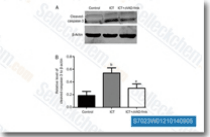
|
|
| S1029 | Lenalidomide | Lenalidomide is a TNF-α secretion inhibitor with IC50 of 13 nM in PBMCs. Lenalidomide (CC-5013) is a ligand of ubiquitin E3 ligase cereblon (CRBN), and it causes selective ubiquitination and degradation of two lymphoid transcription factors, IKZF1 and IKZF3, by the CRBN-CRL4 ubiquitin ligase. Lenalidomide promotes cleaved caspase-3 expression and inhibit VEGF expression and induces apoptosis. |
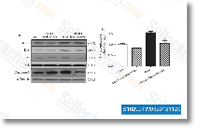
|
|
| S2768 | Dinaciclib | Dinaciclib is a novel and potent CDK inhibitor for CDK2, CDK5, CDK1 and CDK9 with IC50 of 1 nM, 1 nM, 3 nM and 4 nM in cell-free assays, respectively. It also blocks thymidine (dThd) DNA incorporation. Dinaciclib induces apoptosis through the activation of caspases 8 and 9. Phase 3. |
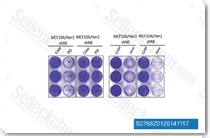
|
|
| S2228 | Belnacasan (VX-765) | Belnacasan (VX-765) is a potent and selective inhibitor of caspase-1 with Ki of 0.8 nM in a cell-free assay. Phase 2. |
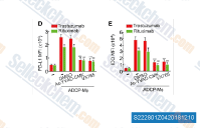
|
|
| S7312 | Z-DEVD-FMK | Z-DEVD-FMK (Caspase-3 Inhibitor) is a specific, irreversible Caspase-3 inhibitor, and also shows potent inhibition on caspase-6, caspase-7, caspase-8, and caspase-10. |
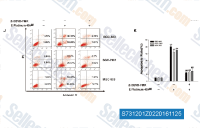
|
|
| S7311 | Q-VD-Oph | Q-VD-Oph (Quinoline-Val-Asp-Difluorophenoxymethylketone) is a potent pan-caspase inhibitor with IC50 ranged from 25 to 400 nM for caspases 1,3,8, and 9. Q-VD-OPh can inhibits HIV infection. |
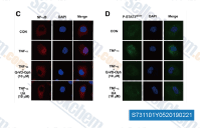
|
|
| S7314 | Z-IETD-FMK | Z-IETD-FMK (Caspase-8 Inhibitor, Z-IE(OMe)TD(OMe)-FMK) is a specific Caspase-8 inhibitor. Z-IETD-FMK is also an inhibitor of granzyme B. |
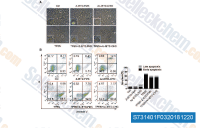
|
|
| S7775 | Emricasan (IDN-6556) | Emricasan (IDN-6556, PF 03491390, PF-03491390) is a potent irreversible pan-caspase inhibitor. Emricasan is an inhibitor of Zika virus infection. | ||
| S7901 | Ac-DEVD-CHO | Ac-DEVD-CHO (Caspase-3 Inhibitor I, N-Ac-Asp-Glu-Val-Asp-CHO) is a potent aldehyde inhibitor of Group II caspases with Ki values of 0.2 nM and 0.3 nM for for caspase-3 and caspase-7, respectively. Weak inhibition for caspase-2. |
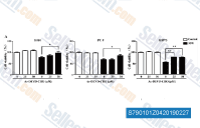
|
|
| S7313 | Z-LEHD-FMK TFA | Z-LEHD-FMK TFA (Caspase-9 Inhibitor) is a cell-permeable, competitive and irreversible inhibitor of enzyme caspase-9, which helps in cell survival. | ||
| S8102 | Z-VAD(OH)-FMK (Caspase Inhibitor VI) | Z-VAD(OH)-FMK (Caspase Inhibitor VI) is an irreversible pan-caspase inhibitor. |
-FMK-S810201Z0220161121.gif)
|
|
| S2891 | GW441756 | GW441756 is a potent, selective inhibitor of TrkA with IC50 of 2 nM, with very little activity to c-Raf1 and CDK2. GW441756 produces a relevant increase of caspase-3 that leads to apoptosis. |
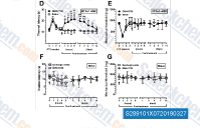
|
|
| S2738 | PAC-1 | PAC-1 is a potent procaspase-3 activator with EC50 of 0.22 μM and the first small molecule known to directly activate procaspase-3 to caspase-3. |
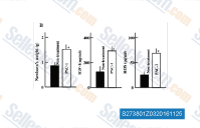
|
|
| S8507 | Z-YVAD-FMK | Z-YVAD-FMK is a cell-permeable and irreversible caspase-1 specific inhibitor with anti-inflammatory and anti-tumor activities. | ||
| S2927 | Apoptosis Activator 2 | Apoptosis Activator 2 strongly induces caspase-3 activation, PARP cleavage, and DNA fragmentation which leads to the destruction of cells (Apaf-1 dependent) with IC50 of ~4 μM, inactive to HMEC, PREC, or MCF-10A cells. | ||
| S2448 | Gambogic Acid | Gambogic Acid (Guttatic Acid, Guttic Acid, Beta-Guttiferrin) activates caspases with EC50 of 0.78-1.64 μM and competitively inhibits Bcl-XL, Bcl-2, Bcl-W, Bcl-B, Bfl-1 and Mcl-1 with IC50 of 1.47, 1.21, 2.02, 0.66, 1.06 and 0.79 μM, respectively. | ||
| S9042 | Wedelolactone | Wedelolactone, a medicinal plant-derived natural compound, is an inhibitor of IKK that is critical for activation of NF-κB by mediating phosphorylation and degradation of IκBα. Wedelolactone is also an inhibitor of caspase-11. | ||
| S3275 | Senkyunolide I | Senkyunolide I (SEI, SENI) is an orally active compound isolated from Ligusticum chuanxiong with analgesic, anti-migraine, neuroprotective, anti-oxidation and anti-apoptosis activities. Senkyunolide I (SEI, SENI) up-regulates the phosphorylation of Erk1/2 and induces Nrf2 nuclear translocation with enhanced HO-1 and NQO1 expressions. Senkyunolide I (SEI, SENI) promotes the ratio of Bcl-2/Bax and inhibits the expressions of cleaved caspase 3 and caspase 9. | ||
| S5967 | Berberine chloride hydrate | Berberine (Natural Yellow 18) chloride hydrate is a quaternary ammonium salt from the group of isoquinoline alkaloids. Berberine activates caspase 3 and caspase 8, cleavage of poly ADP-ribose polymerase (PARP) and the release of cytochrome c. Berberine chloride decreases the expression of c-IAP1, Bcl-2 and Bcl-XL. Berberine chloride induces apoptosis with sustained phosphorylation of JNK and p38 MAPK, as well as generation of the ROS. Berberine chloride is a dual topoisomerase I and II inhibitor. Berberine chloride is also a potential autophagy modulator. | ||
| S3865 | Taurochenodeoxycholic acid | Taurochenodeoxycholic acid (Taurochenodeoxycholate, TCDCA, Chenodeoxycholyltaurine), a bile acid formed in the liver of most species, is used as a cholagogue and choleretic. | ||
| S7326 | Tasisulam | Tasisulam (LY573636) is an antitumor agent and an apoptosis inducer via the intrinsic pathway. Phase 3. | ||
| S3238 | Resibufogenin | Resibufogenin (Bufogenin, Recibufogenin), a component of huachansu with anticancer effect, triggers necroptosis through upregulating receptor-interacting protein kinase 3 (RIP3) and phosphorylating mixed lineage kinase domain-like protein at Ser358. Resibufogenin exerts cytotoxic effect by inducing reactive oxygen species (ROS) accumulation. Resibufogenin induces apoptosis and caspase-3 and caspase-8 activity. Resibufogenin increases Bax/Bcl-2 expression, and suppresses cyclin D1, cyclin E, PI3K, p-AKT, p-GSK3β and β-catenin protein expression. | ||
| S0563 | 10-Deacetyl-7-xylosyl paclitaxel | 10-Deacetyl-7-xylosyl paclitaxel (10-Deacetyl-7-xylosyltaxol, 7-xylosyl-10-deacetylpaclitaxel), a derivative of paclitaxel and naturally occurring xyloside isolated from Taxus chinensis, causes significant mitotic arrest in PC-3 cells followed by up-regulating expression of pro-apoptotic Bax and Bad protein, as well as down-regulating expression of anti-apoptotic Bcl-2 and Bcl-XL , which leads to a disturbance of the mitochondrial membrane permeability and to the activation of caspase-9. | ||
| S8487 | AP20187 | AP20187 (B/B Homodimerizer) is a chemical inducer of dimerization that activates FKBP-Casp8. | ||
| S9817 | Ac-FLTD-CMK | Ac-FLTD-CMK is a specific inhibitor for inflammatory caspases. Ac-FLTD-CMK inhibits gasdermin D (GSDMD) cleavage by caspases-1, -4, -5, and -11 in vitro. Ac-FLTD-CMK is effective against caspases-1, caspases-4 and caspases-5 with IC50 of 46.7 nM, 1.49 μM and 329 nM, respectively. | ||
| S9634 | Phenoxodiol (Haginin E) | Phenoxodiol (Haginin E, Idronoxil, Dehydroequol, NV 06, PXD) is an isoflavone analog with antineoplastic activity that activates the caspase system, inhibits XIAP (X-linked inhibitor of apoptosis), and disrupts FLICE inhibitory protein (FLIP) expression, resulting in tumor cell apoptosis. Phenoxodiol also inhibits DNA topoisomerase II. | ||
| E3037 | Solanum lyratum Extract | Solanum lyratum Extract (300 μg/ml) increases Bax levels and decreases Bcl-2 levels, which cause the loss of mitochondrial membrane potential (Δæm) followed by cytochrome C release and caspase-9 and -3 activation, finally leading to apoptosis. Solanum lyratum Extract (300 μg/ml) also promotes p53 and p27, but decreases the levels of cyclin B1 thus causing S-phase arrest. | ||
| S6899 | Licochalcone D | Licochalcone D (Lico D, LCD, LD), a flavonoid isolated from a Chinese medicinal plant Glycyrrhiza inflata, has antioxidant, anti-inflammatory and anti-cancer properties. Licochalcone D inhibit phosphorylation of NF-κB p65 in LPS signaling pathway. Licochalcone D inhibits JAK2, EGFR and Met (c-Met) activities and induces ROS-dependent apoptosis. Licochalcone D also induces caspases activation and poly (ADP-ribose) polymerase (PARP) cleavage. | ||
| S0913 | 4',5,7-Trimethoxyflavone | 4',5,7-Trimethoxyflavone (5,7,4'-Trimethoxyflavone, TMF) is a flavonoid isolated from Kaempferia parviflora (KP) that induces apoptosis. 4',5,7-Trimethoxyflavone increases sub-G1 phase, DNA fragmentation, annexin-V/PI staining and Bax/Bcl-xL ratio, activates caspase-3 and degrades poly (ADP-ribose) polymerase (PARP) protein. | ||
| S6501 | NVP 231 | NVP 231 is a novel CerK inhibitor that inhibits the catalytic activity of recombinant CerK in vitro with an IC50 of 12 nM. NVP 231 induces cell apoptosis by increasing DNA fragmentation and caspase-3 and caspase-9 cleavage. | ||
| S3224 | Cinobufagin | Cinobufagin (Cinobufagine), an active ingredient of Venenum Bufonis, inhibits tumor development. Cinobufagin increases ATM and Chk2 and decreases CDC25C, CDK1, and cyclin B. Cinobufagin inhibits PI3K, AKT and Bcl-2 while increases levels of cleaved caspase-9 and caspase-3. Thus, Cinobufagin induces cell cycle arrest at the G2/M phase and apoptosis. | ||
| E3053 | Mentha Arvensis Leaf Extract | Mentha Arvensis Leaf Extract is extracted from the leaf of Mentha Arvensis, which might be considered as a promising anticancer agent in breast cancer therapy in combination with synthesised GSNPs because they are less toxic and nonmutagenic and mediate caspase 9-dependent apoptosis. | ||
| E3835 | Cordyceps Militaris Extract | Cordyceps Militaris Extract is extracted from Cordyceps militaris, which induces apoptosis and pyroptosis via caspase-3 and can be used as an anticancer agent. | ||
| S3267 | Nicotiflorin (Kaempferol-3-O-rutinoside) | Nicotiflorin (Kaempferol-3-O-rutinoside), a flavonoid extracted from Carthamus tinctorius, alters the shape and structure of injured neurons, decreases the number of apoptotic cells, down-regulates expression of p-JAK2, p-STAT3, caspase-3, and Bax and decreases Bax immunoredactivity, and increases Bcl-2 protein expression and immunoreactivity. | ||
| E2354 | Valepotriate | Valepotriate, an unstable iridoid isolated from Valeriana jatamansi Jones, has anti-epileptic by significantly increasing the expression of GABAA, glutamic acid decarboxylase 65, and Bcl-2 and reduce the expression of caspase-3. | ||
| E5825New | Z-VAD | Z-VAD is a competitive, irreversible pan-caspase inhibitor with broad specificity and weakly inhibits caspase-2. It induces autophagy and necrosis in irradiated breast and lung cancer models. | ||
| S9276 | Alisol B | Alisol B, a triterpene from Alismatis rhizoma, induces Bax up-regulation and nuclear translocation, the activation of initiator caspase-8 and caspase-9, and executor caspase-3, suggesting the involvement of both extrinsic and intrinsic apoptosis pathways. | ||
| S2271 | Berberine chloride | Berberine chloride is a quaternary ammonium salt from the group of isoquinoline alkaloids. Berberine activates caspase 3 and caspase 8, cleavage of poly ADP-ribose polymerase (PARP) and the release of cytochrome c. Berberine chloride decreases the expression of c-IAP1, Bcl-2 and Bcl-XL. Berberine chloride induces apoptosis with sustained phosphorylation of JNK and p38 MAPK, as well as generation of the ROS. Berberine chloride is a dual topoisomerase I and II inhibitor. Berberine chloride is also a potential autophagy modulator. | ||
| S0354 | Alsterpaullone | Alsterpaullone (Alp, 9-Nitropaullone, NSC 705701) is a potent inhibitor of CDK with IC50 of 35 nM, 15 nM, 200 nM and 40 nM for CDK1/cyclin B, CDK2/cyclin A, CDK2/cyclin E and CDK5/p35, respectively. Alsterpaullone also acts as a potent inhibitor of glycogen synthase kinase-3 (GSK-3) with IC50 of both 4 nM for GSK-3α and GSK-3β. Alsterpaullone induces apoptosis by activation of caspase-9. Alsterpaullone has antitumor activity and possesses potential for the treatment of neurodegenerative and proliferative disorders. | ||
| E3281 | Eleutherine Plicata Extract | Eleutherine Plicata Extract is extracted from Eleutherine plicata, which is a promising medicinal plant, and its activity is associated with cytotoxicity by binding to caspase-8. | ||
| E3638 | Lysinotus pauciflorus Extract | Lysinotus Pauciflorus Extract is extracted from Lysinotus Pauciflorus, which induces apoptosis of hepatocellular carcinoma cells via caspase-3 mediated mitochondrial pathway. | ||
| S6882 | HI-TOPK-032 | HI-TOPK-032 is a potent and specific inhibitor of TOPK. HI-TOPK-032 also reduces ERK-RSK phosphorylation, regulates of the abundance of p53, cleaved caspase-7, and cleaved PARP, and induces apoptosis in cancer cells. | ||
| S4513 | RGD peptide (GRGDNP) | RGD peptide (GRGDNP) is an inhibitor of binding of integrins to the extracellular matrixs. RGD peptide (GRGDNP) induces apoptosis presumably through direct activation of caspase-3. | ||
| S9075 | Mulberroside A | Mulberroside A, isolated from the ethanol extract of Morus alba roots, is widely employed as an active ingredient in cosmetic products due to its anti-tyrosinase and anti-oxidant activities. Mulberroside A decreases the expressions of TNF-α, IL-1β and IL-6 and inhibits the activation of NALP3, caspase-1 and NF-κB and the phosphorylation of ERK, JNK and p38. | ||
| S3088 | (±)-Methyl Jasmonate | (±)-Methyl Jasmonate (MeJA, Methyl jasmonate, Methyl 2-(3-oxo-2-(pent-2-en-1-yl)cyclopentyl)acetate), a phytohormone that acts as a vital cell regulator in plants, is a new candidate for the treatment of Inflammatory bowel diseases (IBDs), modulating the expression of the major classes of caspase-type protease families. |
||
| S9097 | Alisol B Acetate | Alisol B acetate, a triterpene from Alismatis rhizoma, induces Bax up-regulation and nuclear translocation, the activation of initiator caspase-8 and caspase-9, and executor caspase-3, suggesting the involvement of both extrinsic and intrinsic apoptosis pathways. | ||
| S5550 | Ethyl gallate | Ethyl gallat (Phyllemblin, gallic acid ethyl ester), which could be found naturally in a variety of plant sources, is a food additive with antimicrobial activity. Ethyl gallat activates the death receptor-dependent pathway of apoptosis by enhancing the expression of caspases-8, -9, and -3 and the Bcl-2 interacting domain (Bid). | ||
| S5579 | Chelidonic acid | Chelidonic acid (Jerva acid, Jervaic acid, γ-Pyrone-2,6-dicarboxylic acid) is a secondary metabolite found in several plants with therapeutic potential in allergic disorders in experimental animals. Chelidonic acid inhibits IL-6 production by blocking NF-κB and caspase-1 in HMC-1 cells. Chelidonic acid is also an inhibitor of glutamate decarboxylase with Ki of 1.2 μM. | ||
| S6990 | Phytohemagglutinin (PHA) | Phytohemagglutinin (PHA) is a glycoprotein from red kidney beans (Phaseolus vulgaris) that acts as a potent mitogen, stimulating lymphocyte proliferation and transforming them into large blast cells. It can suppress humoral antibody responses and enhance the survival of homografts by inhibiting immune rejection. It also triggers T-cell activation and apoptosis by upregulating pro-apoptotic proteins like Bax, leading to the activation of caspase-3. | ||
| S4353 | Terfenadine | Terfenadine is an antihistamine, generally completely metabolizes to the active form fexofenadine in the liver by the enzyme cytochrome P450 CYP3A4 isoform. Terfenadine ((±)-Terfenadine) is a potent open-channel blocker of hERG with an IC50 of 204 nM. Terfenadine, an H1 histamine receptor antagonist, acts as a potent apoptosis inducer in melanoma cells through modulation of Ca2+ homeostasis. Terfenadine induces ROS-dependent apoptosis, simultaneously activates Caspase-4, -2, -9. | ||
| S5584 | Citronellol | Citronellol (Dihydrogeraniol, (±)-β-Citronellol), a constituent of rose and geranium oils, is used in perfumes and insect repellents. Citronellol can cause necrotic apoptosis of NCI-H1299 cells by up-regulating TNF-α, RIP1 / RIP3 activities, and down-regulating caspase-3 / caspase-8 activities. Citronellol also results in a biphasic increase in ROS production at 1 h and at 12 h in NCI-H1299 cells. | ||
| S6846 | Gly-Phe β-naphthylamide | Gly-Phe β-naphthylamide (Gly-Phe beta-naphthylamide) is a substrate of cathepsin C that accumulates within the lysosome. Gly-Phe-β-naphthylamide can inhibit the cathepsin-dependent activation of caspase-8. | ||
| S7023 | Z-VAD-FMK | Z-VAD-FMK (Z-VAD(OMe)-FMK) is a cell-permeable, irreversible pan-caspase inhibitor, blocks all features of apoptosis in THP.1 and Jurkat T-cells. |

|
|
| S2228 | Belnacasan (VX-765) | Belnacasan (VX-765) is a potent and selective inhibitor of caspase-1 with Ki of 0.8 nM in a cell-free assay. Phase 2. |

|
|
| S7312 | Z-DEVD-FMK | Z-DEVD-FMK (Caspase-3 Inhibitor) is a specific, irreversible Caspase-3 inhibitor, and also shows potent inhibition on caspase-6, caspase-7, caspase-8, and caspase-10. |

|
|
| S7311 | Q-VD-Oph | Q-VD-Oph (Quinoline-Val-Asp-Difluorophenoxymethylketone) is a potent pan-caspase inhibitor with IC50 ranged from 25 to 400 nM for caspases 1,3,8, and 9. Q-VD-OPh can inhibits HIV infection. |

|
|
| S7314 | Z-IETD-FMK | Z-IETD-FMK (Caspase-8 Inhibitor, Z-IE(OMe)TD(OMe)-FMK) is a specific Caspase-8 inhibitor. Z-IETD-FMK is also an inhibitor of granzyme B. |

|
|
| S7775 | Emricasan (IDN-6556) | Emricasan (IDN-6556, PF 03491390, PF-03491390) is a potent irreversible pan-caspase inhibitor. Emricasan is an inhibitor of Zika virus infection. | ||
| S7901 | Ac-DEVD-CHO | Ac-DEVD-CHO (Caspase-3 Inhibitor I, N-Ac-Asp-Glu-Val-Asp-CHO) is a potent aldehyde inhibitor of Group II caspases with Ki values of 0.2 nM and 0.3 nM for for caspase-3 and caspase-7, respectively. Weak inhibition for caspase-2. |

|
|
| S7313 | Z-LEHD-FMK TFA | Z-LEHD-FMK TFA (Caspase-9 Inhibitor) is a cell-permeable, competitive and irreversible inhibitor of enzyme caspase-9, which helps in cell survival. | ||
| S8102 | Z-VAD(OH)-FMK (Caspase Inhibitor VI) | Z-VAD(OH)-FMK (Caspase Inhibitor VI) is an irreversible pan-caspase inhibitor. |
-FMK-S810201Z0220161121.gif)
|
|
| S8507 | Z-YVAD-FMK | Z-YVAD-FMK is a cell-permeable and irreversible caspase-1 specific inhibitor with anti-inflammatory and anti-tumor activities. | ||
| S9042 | Wedelolactone | Wedelolactone, a medicinal plant-derived natural compound, is an inhibitor of IKK that is critical for activation of NF-κB by mediating phosphorylation and degradation of IκBα. Wedelolactone is also an inhibitor of caspase-11. | ||
| S3275 | Senkyunolide I | Senkyunolide I (SEI, SENI) is an orally active compound isolated from Ligusticum chuanxiong with analgesic, anti-migraine, neuroprotective, anti-oxidation and anti-apoptosis activities. Senkyunolide I (SEI, SENI) up-regulates the phosphorylation of Erk1/2 and induces Nrf2 nuclear translocation with enhanced HO-1 and NQO1 expressions. Senkyunolide I (SEI, SENI) promotes the ratio of Bcl-2/Bax and inhibits the expressions of cleaved caspase 3 and caspase 9. | ||
| S9817 | Ac-FLTD-CMK | Ac-FLTD-CMK is a specific inhibitor for inflammatory caspases. Ac-FLTD-CMK inhibits gasdermin D (GSDMD) cleavage by caspases-1, -4, -5, and -11 in vitro. Ac-FLTD-CMK is effective against caspases-1, caspases-4 and caspases-5 with IC50 of 46.7 nM, 1.49 μM and 329 nM, respectively. | ||
| E3053 | Mentha Arvensis Leaf Extract | Mentha Arvensis Leaf Extract is extracted from the leaf of Mentha Arvensis, which might be considered as a promising anticancer agent in breast cancer therapy in combination with synthesised GSNPs because they are less toxic and nonmutagenic and mediate caspase 9-dependent apoptosis. | ||
| E3835 | Cordyceps Militaris Extract | Cordyceps Militaris Extract is extracted from Cordyceps militaris, which induces apoptosis and pyroptosis via caspase-3 and can be used as an anticancer agent. | ||
| S3267 | Nicotiflorin (Kaempferol-3-O-rutinoside) | Nicotiflorin (Kaempferol-3-O-rutinoside), a flavonoid extracted from Carthamus tinctorius, alters the shape and structure of injured neurons, decreases the number of apoptotic cells, down-regulates expression of p-JAK2, p-STAT3, caspase-3, and Bax and decreases Bax immunoredactivity, and increases Bcl-2 protein expression and immunoreactivity. | ||
| E2354 | Valepotriate | Valepotriate, an unstable iridoid isolated from Valeriana jatamansi Jones, has anti-epileptic by significantly increasing the expression of GABAA, glutamic acid decarboxylase 65, and Bcl-2 and reduce the expression of caspase-3. | ||
| E5825New | Z-VAD | Z-VAD is a competitive, irreversible pan-caspase inhibitor with broad specificity and weakly inhibits caspase-2. It induces autophagy and necrosis in irradiated breast and lung cancer models. | ||
| S9075 | Mulberroside A | Mulberroside A, isolated from the ethanol extract of Morus alba roots, is widely employed as an active ingredient in cosmetic products due to its anti-tyrosinase and anti-oxidant activities. Mulberroside A decreases the expressions of TNF-α, IL-1β and IL-6 and inhibits the activation of NALP3, caspase-1 and NF-κB and the phosphorylation of ERK, JNK and p38. | ||
| S5579 | Chelidonic acid | Chelidonic acid (Jerva acid, Jervaic acid, γ-Pyrone-2,6-dicarboxylic acid) is a secondary metabolite found in several plants with therapeutic potential in allergic disorders in experimental animals. Chelidonic acid inhibits IL-6 production by blocking NF-κB and caspase-1 in HMC-1 cells. Chelidonic acid is also an inhibitor of glutamate decarboxylase with Ki of 1.2 μM. | ||
| S5584 | Citronellol | Citronellol (Dihydrogeraniol, (±)-β-Citronellol), a constituent of rose and geranium oils, is used in perfumes and insect repellents. Citronellol can cause necrotic apoptosis of NCI-H1299 cells by up-regulating TNF-α, RIP1 / RIP3 activities, and down-regulating caspase-3 / caspase-8 activities. Citronellol also results in a biphasic increase in ROS production at 1 h and at 12 h in NCI-H1299 cells. | ||
| S6846 | Gly-Phe β-naphthylamide | Gly-Phe β-naphthylamide (Gly-Phe beta-naphthylamide) is a substrate of cathepsin C that accumulates within the lysosome. Gly-Phe-β-naphthylamide can inhibit the cathepsin-dependent activation of caspase-8. | ||
| S1029 | Lenalidomide | Lenalidomide is a TNF-α secretion inhibitor with IC50 of 13 nM in PBMCs. Lenalidomide (CC-5013) is a ligand of ubiquitin E3 ligase cereblon (CRBN), and it causes selective ubiquitination and degradation of two lymphoid transcription factors, IKZF1 and IKZF3, by the CRBN-CRL4 ubiquitin ligase. Lenalidomide promotes cleaved caspase-3 expression and inhibit VEGF expression and induces apoptosis. |

|
|
| S2768 | Dinaciclib | Dinaciclib is a novel and potent CDK inhibitor for CDK2, CDK5, CDK1 and CDK9 with IC50 of 1 nM, 1 nM, 3 nM and 4 nM in cell-free assays, respectively. It also blocks thymidine (dThd) DNA incorporation. Dinaciclib induces apoptosis through the activation of caspases 8 and 9. Phase 3. |

|
|
| S2891 | GW441756 | GW441756 is a potent, selective inhibitor of TrkA with IC50 of 2 nM, with very little activity to c-Raf1 and CDK2. GW441756 produces a relevant increase of caspase-3 that leads to apoptosis. |

|
|
| S2738 | PAC-1 | PAC-1 is a potent procaspase-3 activator with EC50 of 0.22 μM and the first small molecule known to directly activate procaspase-3 to caspase-3. |

|
|
| S2927 | Apoptosis Activator 2 | Apoptosis Activator 2 strongly induces caspase-3 activation, PARP cleavage, and DNA fragmentation which leads to the destruction of cells (Apaf-1 dependent) with IC50 of ~4 μM, inactive to HMEC, PREC, or MCF-10A cells. | ||
| S2448 | Gambogic Acid | Gambogic Acid (Guttatic Acid, Guttic Acid, Beta-Guttiferrin) activates caspases with EC50 of 0.78-1.64 μM and competitively inhibits Bcl-XL, Bcl-2, Bcl-W, Bcl-B, Bfl-1 and Mcl-1 with IC50 of 1.47, 1.21, 2.02, 0.66, 1.06 and 0.79 μM, respectively. | ||
| S5967 | Berberine chloride hydrate | Berberine (Natural Yellow 18) chloride hydrate is a quaternary ammonium salt from the group of isoquinoline alkaloids. Berberine activates caspase 3 and caspase 8, cleavage of poly ADP-ribose polymerase (PARP) and the release of cytochrome c. Berberine chloride decreases the expression of c-IAP1, Bcl-2 and Bcl-XL. Berberine chloride induces apoptosis with sustained phosphorylation of JNK and p38 MAPK, as well as generation of the ROS. Berberine chloride is a dual topoisomerase I and II inhibitor. Berberine chloride is also a potential autophagy modulator. | ||
| S3865 | Taurochenodeoxycholic acid | Taurochenodeoxycholic acid (Taurochenodeoxycholate, TCDCA, Chenodeoxycholyltaurine), a bile acid formed in the liver of most species, is used as a cholagogue and choleretic. | ||
| S7326 | Tasisulam | Tasisulam (LY573636) is an antitumor agent and an apoptosis inducer via the intrinsic pathway. Phase 3. | ||
| S3238 | Resibufogenin | Resibufogenin (Bufogenin, Recibufogenin), a component of huachansu with anticancer effect, triggers necroptosis through upregulating receptor-interacting protein kinase 3 (RIP3) and phosphorylating mixed lineage kinase domain-like protein at Ser358. Resibufogenin exerts cytotoxic effect by inducing reactive oxygen species (ROS) accumulation. Resibufogenin induces apoptosis and caspase-3 and caspase-8 activity. Resibufogenin increases Bax/Bcl-2 expression, and suppresses cyclin D1, cyclin E, PI3K, p-AKT, p-GSK3β and β-catenin protein expression. | ||
| S0563 | 10-Deacetyl-7-xylosyl paclitaxel | 10-Deacetyl-7-xylosyl paclitaxel (10-Deacetyl-7-xylosyltaxol, 7-xylosyl-10-deacetylpaclitaxel), a derivative of paclitaxel and naturally occurring xyloside isolated from Taxus chinensis, causes significant mitotic arrest in PC-3 cells followed by up-regulating expression of pro-apoptotic Bax and Bad protein, as well as down-regulating expression of anti-apoptotic Bcl-2 and Bcl-XL , which leads to a disturbance of the mitochondrial membrane permeability and to the activation of caspase-9. | ||
| S9634 | Phenoxodiol (Haginin E) | Phenoxodiol (Haginin E, Idronoxil, Dehydroequol, NV 06, PXD) is an isoflavone analog with antineoplastic activity that activates the caspase system, inhibits XIAP (X-linked inhibitor of apoptosis), and disrupts FLICE inhibitory protein (FLIP) expression, resulting in tumor cell apoptosis. Phenoxodiol also inhibits DNA topoisomerase II. | ||
| E3037 | Solanum lyratum Extract | Solanum lyratum Extract (300 μg/ml) increases Bax levels and decreases Bcl-2 levels, which cause the loss of mitochondrial membrane potential (Δæm) followed by cytochrome C release and caspase-9 and -3 activation, finally leading to apoptosis. Solanum lyratum Extract (300 μg/ml) also promotes p53 and p27, but decreases the levels of cyclin B1 thus causing S-phase arrest. | ||
| S6899 | Licochalcone D | Licochalcone D (Lico D, LCD, LD), a flavonoid isolated from a Chinese medicinal plant Glycyrrhiza inflata, has antioxidant, anti-inflammatory and anti-cancer properties. Licochalcone D inhibit phosphorylation of NF-κB p65 in LPS signaling pathway. Licochalcone D inhibits JAK2, EGFR and Met (c-Met) activities and induces ROS-dependent apoptosis. Licochalcone D also induces caspases activation and poly (ADP-ribose) polymerase (PARP) cleavage. | ||
| S0913 | 4',5,7-Trimethoxyflavone | 4',5,7-Trimethoxyflavone (5,7,4'-Trimethoxyflavone, TMF) is a flavonoid isolated from Kaempferia parviflora (KP) that induces apoptosis. 4',5,7-Trimethoxyflavone increases sub-G1 phase, DNA fragmentation, annexin-V/PI staining and Bax/Bcl-xL ratio, activates caspase-3 and degrades poly (ADP-ribose) polymerase (PARP) protein. | ||
| S6501 | NVP 231 | NVP 231 is a novel CerK inhibitor that inhibits the catalytic activity of recombinant CerK in vitro with an IC50 of 12 nM. NVP 231 induces cell apoptosis by increasing DNA fragmentation and caspase-3 and caspase-9 cleavage. | ||
| S9276 | Alisol B | Alisol B, a triterpene from Alismatis rhizoma, induces Bax up-regulation and nuclear translocation, the activation of initiator caspase-8 and caspase-9, and executor caspase-3, suggesting the involvement of both extrinsic and intrinsic apoptosis pathways. | ||
| S2271 | Berberine chloride | Berberine chloride is a quaternary ammonium salt from the group of isoquinoline alkaloids. Berberine activates caspase 3 and caspase 8, cleavage of poly ADP-ribose polymerase (PARP) and the release of cytochrome c. Berberine chloride decreases the expression of c-IAP1, Bcl-2 and Bcl-XL. Berberine chloride induces apoptosis with sustained phosphorylation of JNK and p38 MAPK, as well as generation of the ROS. Berberine chloride is a dual topoisomerase I and II inhibitor. Berberine chloride is also a potential autophagy modulator. | ||
| S0354 | Alsterpaullone | Alsterpaullone (Alp, 9-Nitropaullone, NSC 705701) is a potent inhibitor of CDK with IC50 of 35 nM, 15 nM, 200 nM and 40 nM for CDK1/cyclin B, CDK2/cyclin A, CDK2/cyclin E and CDK5/p35, respectively. Alsterpaullone also acts as a potent inhibitor of glycogen synthase kinase-3 (GSK-3) with IC50 of both 4 nM for GSK-3α and GSK-3β. Alsterpaullone induces apoptosis by activation of caspase-9. Alsterpaullone has antitumor activity and possesses potential for the treatment of neurodegenerative and proliferative disorders. | ||
| S4513 | RGD peptide (GRGDNP) | RGD peptide (GRGDNP) is an inhibitor of binding of integrins to the extracellular matrixs. RGD peptide (GRGDNP) induces apoptosis presumably through direct activation of caspase-3. | ||
| S9097 | Alisol B Acetate | Alisol B acetate, a triterpene from Alismatis rhizoma, induces Bax up-regulation and nuclear translocation, the activation of initiator caspase-8 and caspase-9, and executor caspase-3, suggesting the involvement of both extrinsic and intrinsic apoptosis pathways. | ||
| S5550 | Ethyl gallate | Ethyl gallat (Phyllemblin, gallic acid ethyl ester), which could be found naturally in a variety of plant sources, is a food additive with antimicrobial activity. Ethyl gallat activates the death receptor-dependent pathway of apoptosis by enhancing the expression of caspases-8, -9, and -3 and the Bcl-2 interacting domain (Bid). | ||
| S6990 | Phytohemagglutinin (PHA) | Phytohemagglutinin (PHA) is a glycoprotein from red kidney beans (Phaseolus vulgaris) that acts as a potent mitogen, stimulating lymphocyte proliferation and transforming them into large blast cells. It can suppress humoral antibody responses and enhance the survival of homografts by inhibiting immune rejection. It also triggers T-cell activation and apoptosis by upregulating pro-apoptotic proteins like Bax, leading to the activation of caspase-3. | ||
| S4353 | Terfenadine | Terfenadine is an antihistamine, generally completely metabolizes to the active form fexofenadine in the liver by the enzyme cytochrome P450 CYP3A4 isoform. Terfenadine ((±)-Terfenadine) is a potent open-channel blocker of hERG with an IC50 of 204 nM. Terfenadine, an H1 histamine receptor antagonist, acts as a potent apoptosis inducer in melanoma cells through modulation of Ca2+ homeostasis. Terfenadine induces ROS-dependent apoptosis, simultaneously activates Caspase-4, -2, -9. | ||
| E3638 | Lysinotus pauciflorus Extract | Lysinotus Pauciflorus Extract is extracted from Lysinotus Pauciflorus, which induces apoptosis of hepatocellular carcinoma cells via caspase-3 mediated mitochondrial pathway. | ||
| S3224 | Cinobufagin | Cinobufagin (Cinobufagine), an active ingredient of Venenum Bufonis, inhibits tumor development. Cinobufagin increases ATM and Chk2 and decreases CDC25C, CDK1, and cyclin B. Cinobufagin inhibits PI3K, AKT and Bcl-2 while increases levels of cleaved caspase-9 and caspase-3. Thus, Cinobufagin induces cell cycle arrest at the G2/M phase and apoptosis. | ||
| S6882 | HI-TOPK-032 | HI-TOPK-032 is a potent and specific inhibitor of TOPK. HI-TOPK-032 also reduces ERK-RSK phosphorylation, regulates of the abundance of p53, cleaved caspase-7, and cleaved PARP, and induces apoptosis in cancer cells. | ||
| S3088 | (±)-Methyl Jasmonate | (±)-Methyl Jasmonate (MeJA, Methyl jasmonate, Methyl 2-(3-oxo-2-(pent-2-en-1-yl)cyclopentyl)acetate), a phytohormone that acts as a vital cell regulator in plants, is a new candidate for the treatment of Inflammatory bowel diseases (IBDs), modulating the expression of the major classes of caspase-type protease families. |
||
| E5825New | Z-VAD | Z-VAD is a competitive, irreversible pan-caspase inhibitor with broad specificity and weakly inhibits caspase-2. It induces autophagy and necrosis in irradiated breast and lung cancer models. |
Choose Selective Caspase Inhibitors
Tags: Caspases apoptosis | Caspase inhibition | Caspase activation | Caspase activity | Caspase pathway | Caspase phosphorylation | Caspase cleavage | Caspase activity assay | Procaspase activation | Caspase inhibitor in vivo | Caspase inhibitor clinical trial | Caspase-independent apoptosis | Caspase-dependent apoptosis | Caspase inhibitor review







































